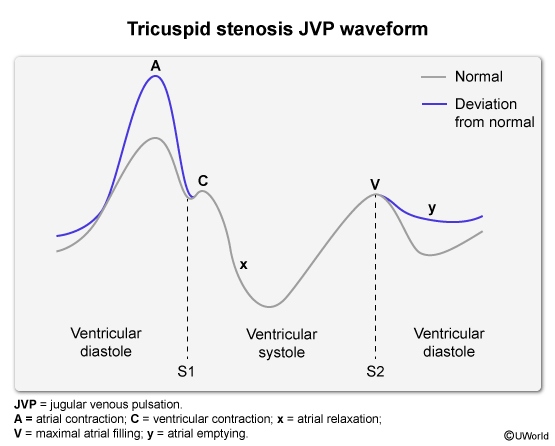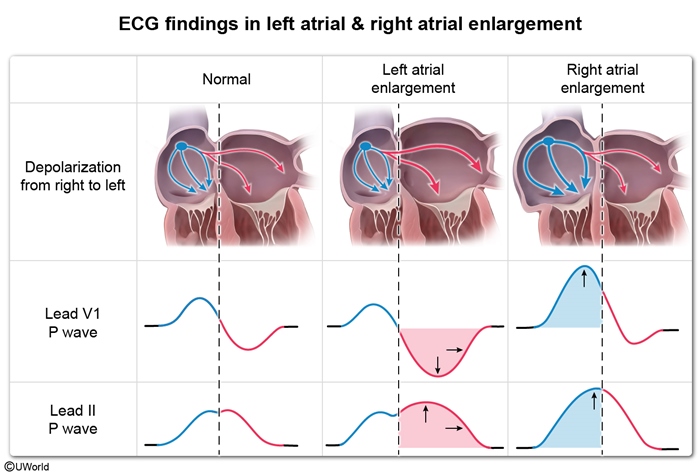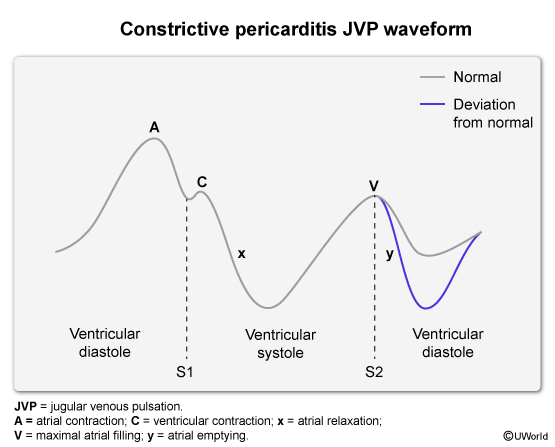Valve Disorders: Tricuspid Stenosis
Article Sections
Introduction
Tricuspid stenosis results from valve leaflet calcification and stiffening that impairs valve opening and restricts diastolic blood flow from the right atrium to the right ventricle. It is much less common than mitral stenosis, its left-sided counterpart; however, like mitral stenosis, it is typically caused by rheumatic heart disease. Severe tricuspid stenosis leads to right-sided heart failure.
Pathophysiology
Isolated tricuspid stenosis is rare; tricuspid stenosis is usually seen in combination with mitral stenosis and in the setting of rheumatic heart disease. Its pathophysiology usually involves repeated episodes of rheumatic fever causing chronic inflammation and scarring of the tricuspid valve leaflets, which reduces their mobility and restricts the size of the tricuspid valve orifice. As a result, diastolic filling from the right atrium to the right ventricle is impaired, restricting blood flow through the pulmonary circulation to the left side of the heart, restricting cardiac output, and causing increased pressure in the right atrium and systemic venous circulation.
Continue Learning with UWorld
Get the full Valve Disorders: Tricuspid Stenosis article plus rich visuals, real-world cases, and in-depth insights from medical experts, all available through the UWorld Medical Library.
Figures


